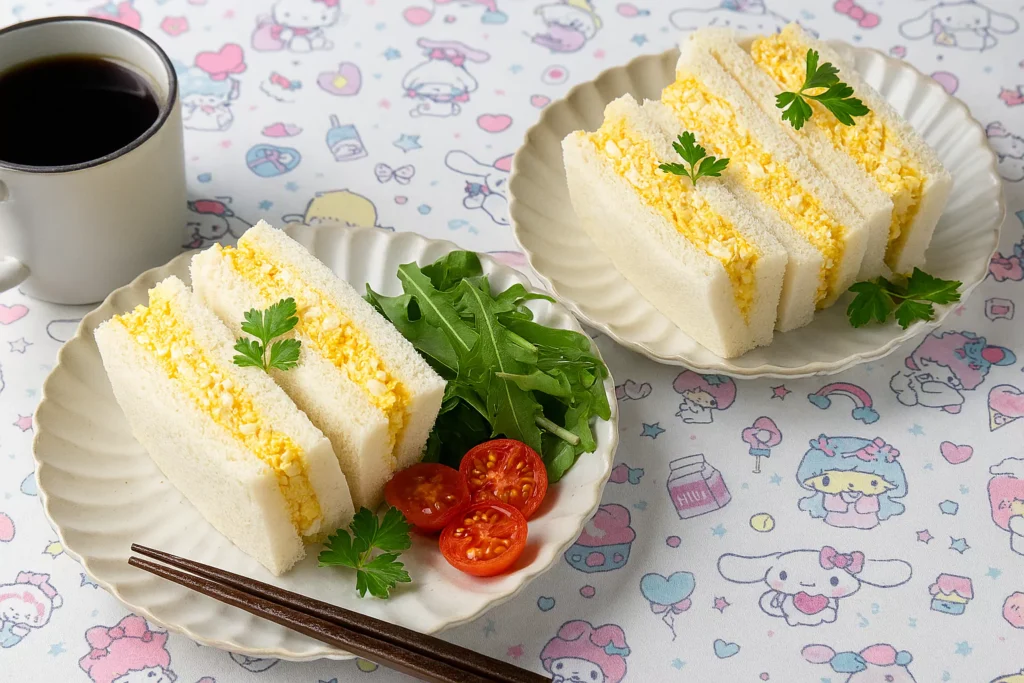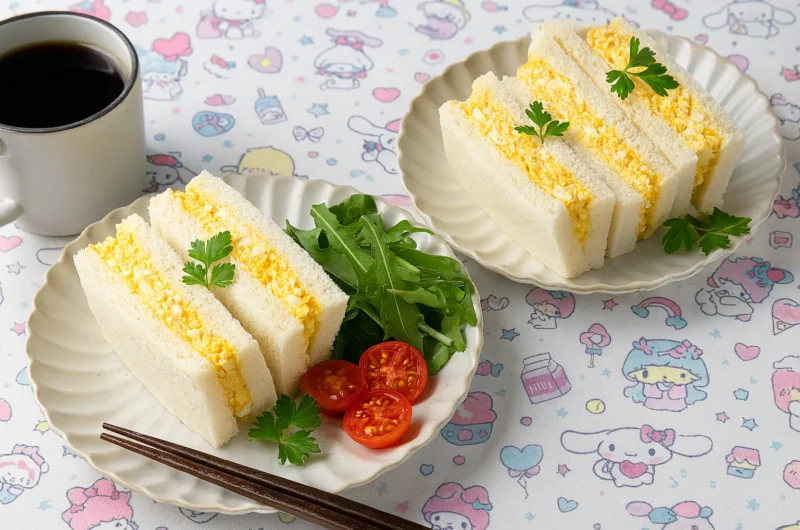Have you ever wondered why a simple egg sandwich from Japan feels so special? Most sandwiches are ordinary, but the Japanese Egg Sandwich—called Tamago Sando—is creamy, smooth, and made with care. It has a tender texture, a rich flavor, and practically dissolves with each bite. So, what makes this humble sandwich a favorite in Japan and beyond? Let’s find out.
What Makes This Egg Sandwich Special?
The Japanese Egg Sandwich stands out because of its balance. It’s sweet, salty, and rich without being too heavy. It takes less than 30 minutes to prepare, and anyone can do it—even kids! Fluffy shokupan, smooth egg filling, and a hint of butter blend into a sandwich that’s both cozy and elegant.
You don’t need any fancy equipment. All the ingredients are simple, and the result is pure magic. Whether you’re preparing lunch, a tea-time treat, or a quick snack, this Egg Sandwich is perfect.
Jump to Recipe Print Recipe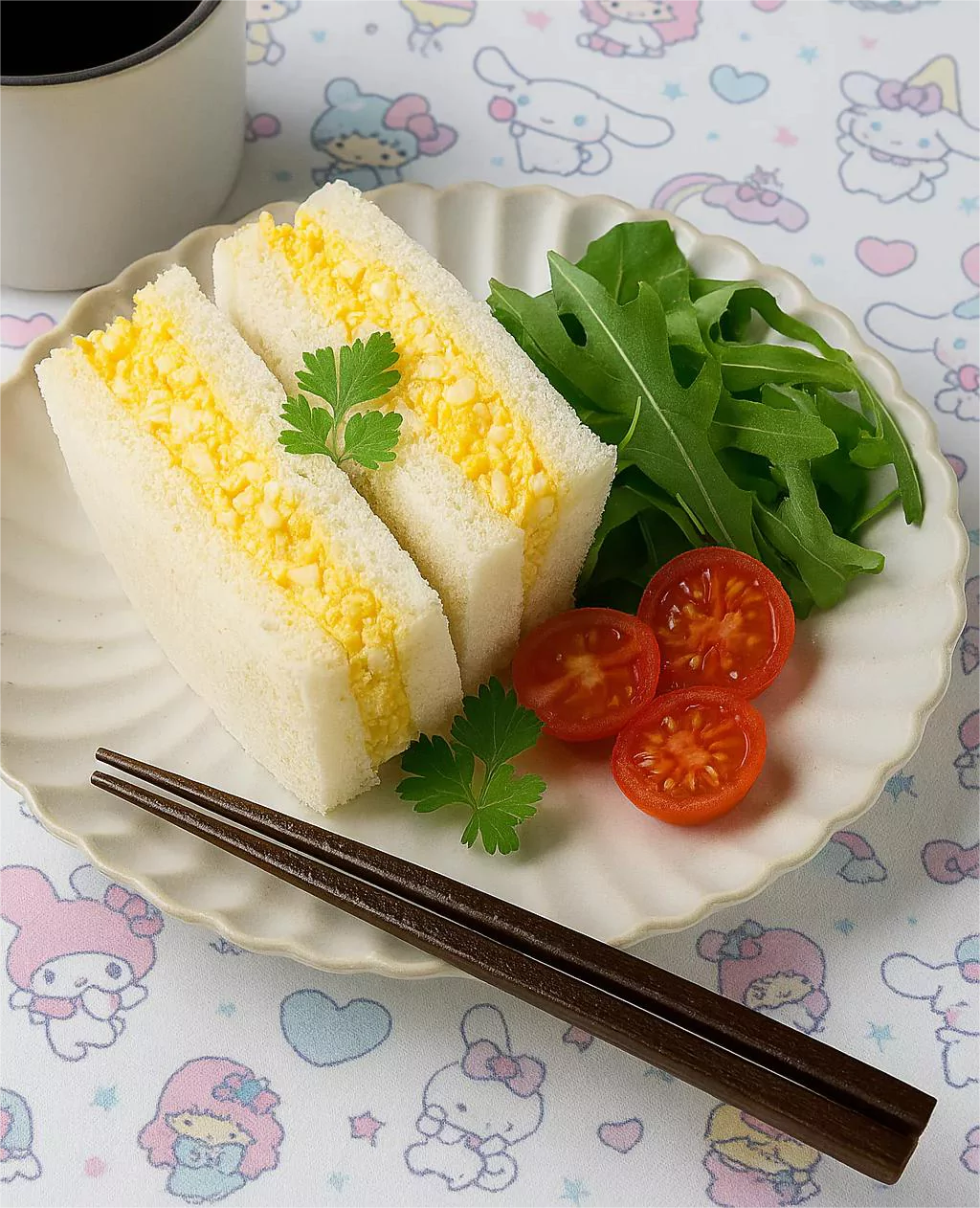
Egg Sandwich (Tamago Sando) たまごサンド @JapanDishes
What Is Japanese Egg Sandwich (Tamago Sando) たまごサンド?
In Japan, an Egg Sandwich is not just food—it’s a work of care. Called Tamago Sando (たまごサンド), this sandwich pairs a silky egg mixture with slices of pillowy Japanese milk bread known as shokupan. The eggs are boiled just right, mashed finely, and mixed with Japanese Kewpie mayonnaise, sugar, salt, pepper, and a bit of milk for creaminess.
Unlike other sandwiches that pile on toppings, the Egg Sandwich in Japan is focused, neat, and flavorful. You’ll see it in convenience stores (konbini), cafes, and even high-end lunch boxes.
Learn More About Japanese Mayonnaise
Not sure what makes Japanese Kewpie mayonnaise so special? It’s an essential part of the flavor in your Egg Sandwich. You can learn how to make it at home with this easy guide: Your Easy Guide to Making Japanese Mayonnaise. Mastering this sauce will take your Japanese cooking to the next level.
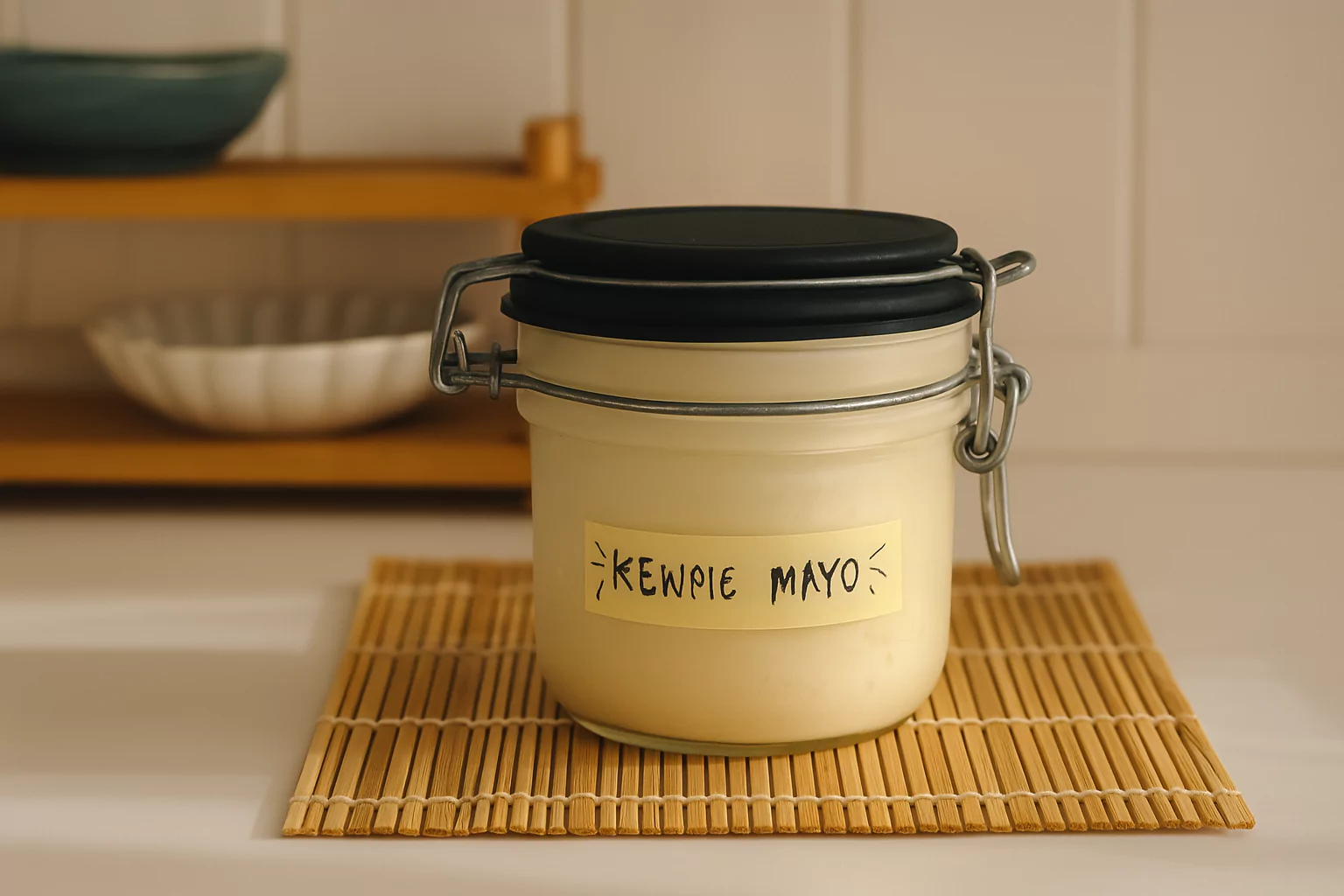
Japanese Mayonnaise (Kewpie) マヨネーズ
Essential Ingredients for the Perfect Egg Sandwich
Here’s what you need to make this mouthwatering Egg Sandwich at home:
- 3 large eggs (about 50 g each without shell): The star of the recipe.
- ¼ tsp sugar: Adds a touch of sweetness that’s unique to Japanese flavors.
- ¼ tsp Diamond Crystal kosher salt: Enhances the taste of the eggs.
- ⅛ tsp freshly ground black pepper: For mild spice and aroma.
- 2 tsp milk: Makes the egg salad light and creamy.
- 2 Tbsp Japanese Kewpie mayonnaise – Creamy and flavorful with a slightly sharper taste than standard mayonnaise.
- 4 slices shokupan (Japanese milk bread): Soft and slightly sweet bread.
- Salted butter: Spread on the bread to add flavor and prevent sogginess.
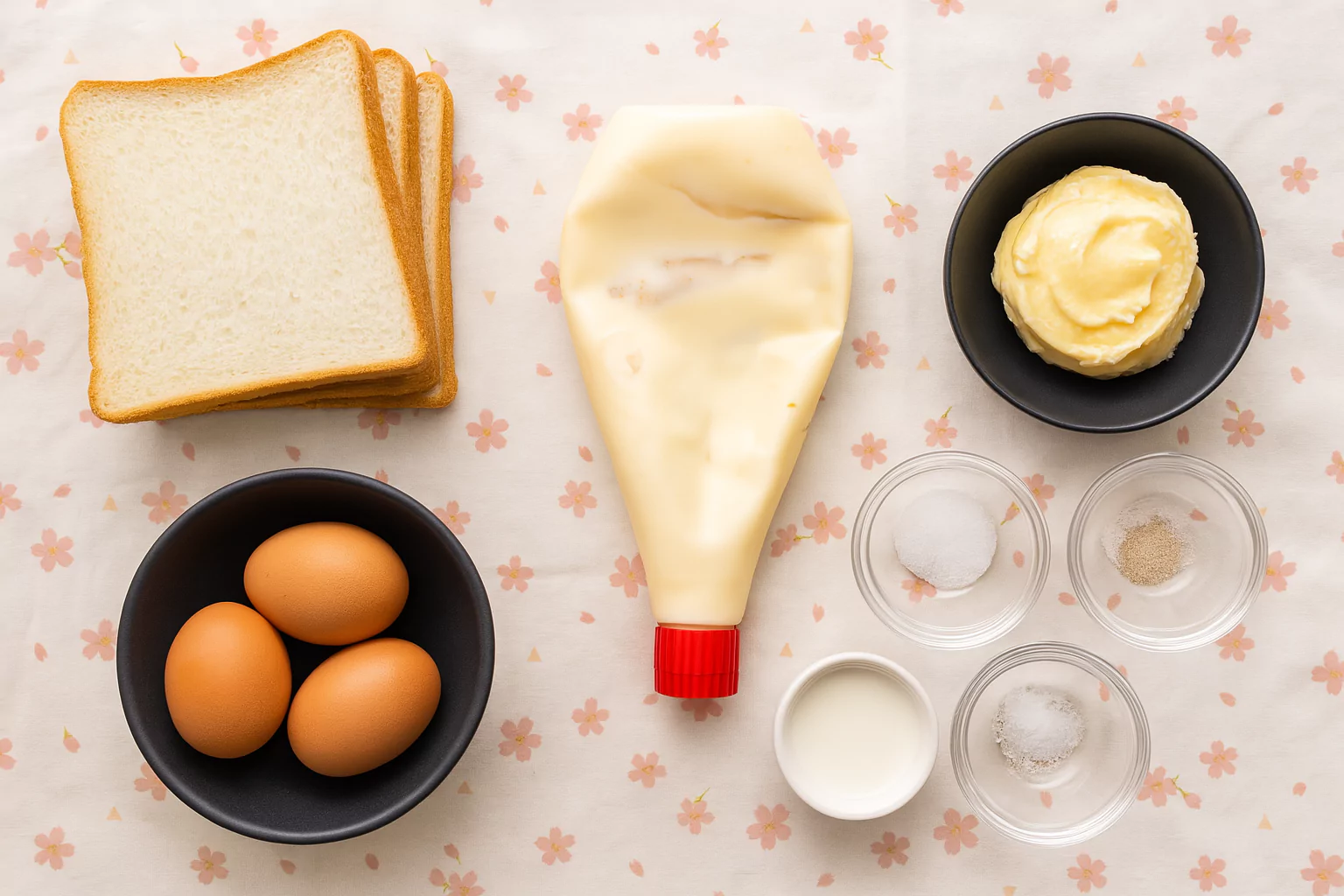
Ingredients for the Perfect Tamago Sando
Ingredient Notes and Substitutes
- Can’t find Kewpie? Use regular mayo and add a splash of rice vinegar.
- No shokupan? Try soft white sandwich bread, crustless if possible.
- Lactose-free? Swap in unsweetened almond or soy milk as a dairy-free alternative.
Step-by-Step Instructions
Let’s make your own Japanese-style Egg Sandwich. It’s easy when you follow these clear steps.
Step 1: Boil the Eggs
Place 3 large eggs in a medium saucepan. Cover with water so it rises an inch above the eggs. Set the pan on medium heat and bring it to a boil. Once boiling, cook for exactly 12 minutes.
Step 2: Cool and Peel
Place the cooked eggs in a bowl filled with ice water. This cools them quickly and helps the shells come off more easily. Let them cool completely.
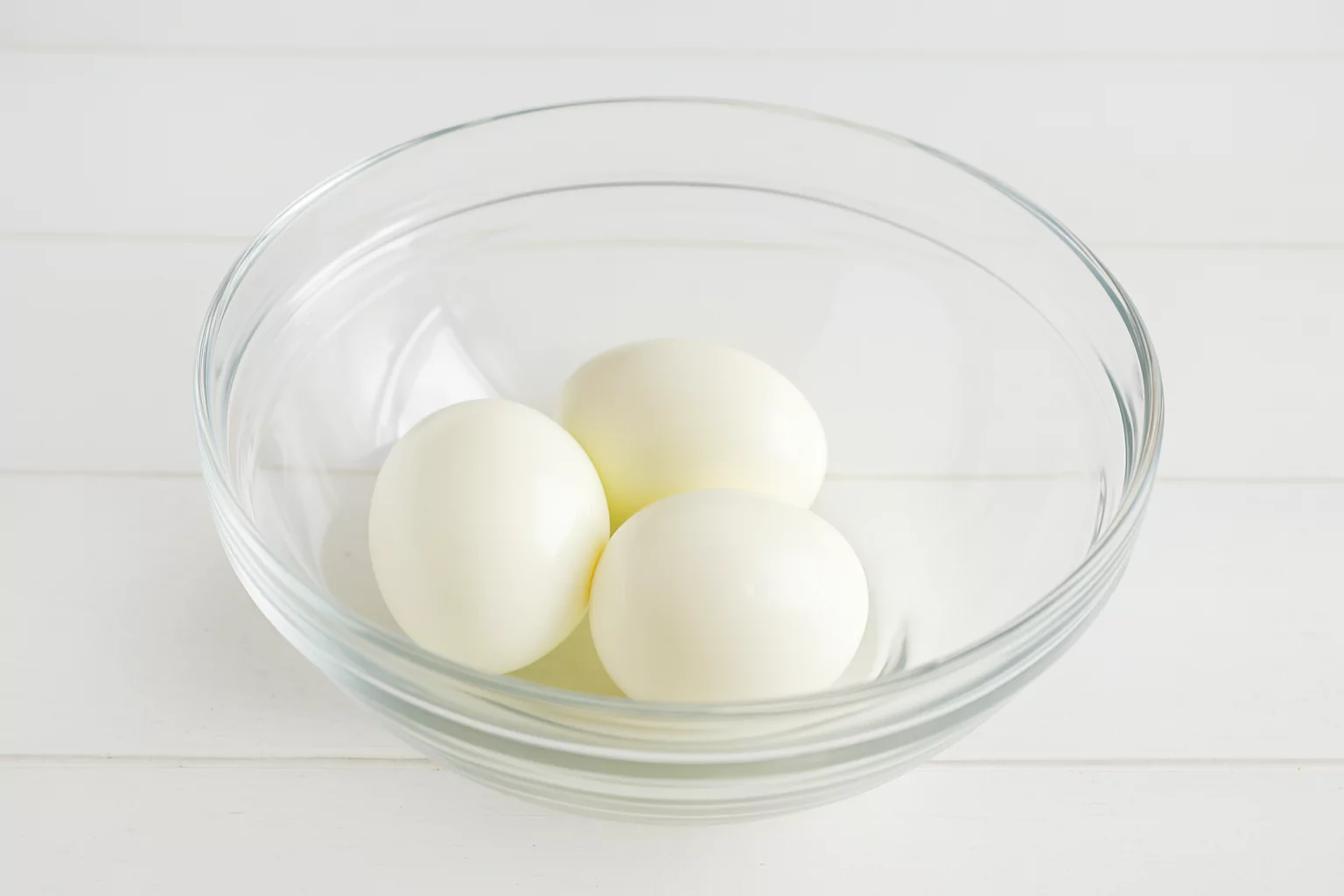
Step 3: Mash the Eggs
Place the peeled eggs in a mixing bowl. Use a fork to mash them into small, even bits. You want the whites and yolks blended smoothly for the best texture in your Egg Sandwich.
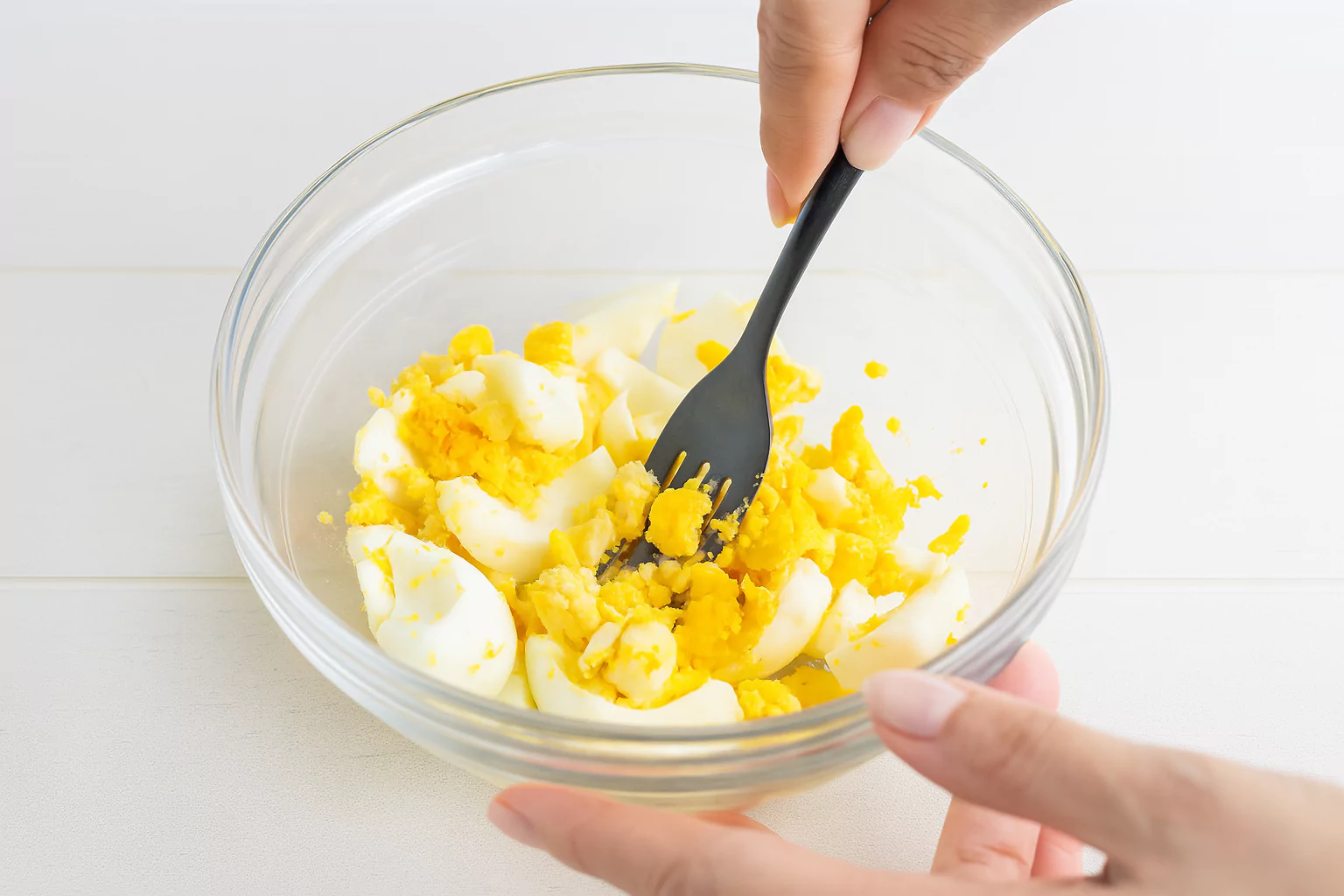
Step 4: Season and Add Milk
Sprinkle in the sugar, salt, and pepper. Then, add the milk and stir until combined. This step makes the egg salad extra creamy.
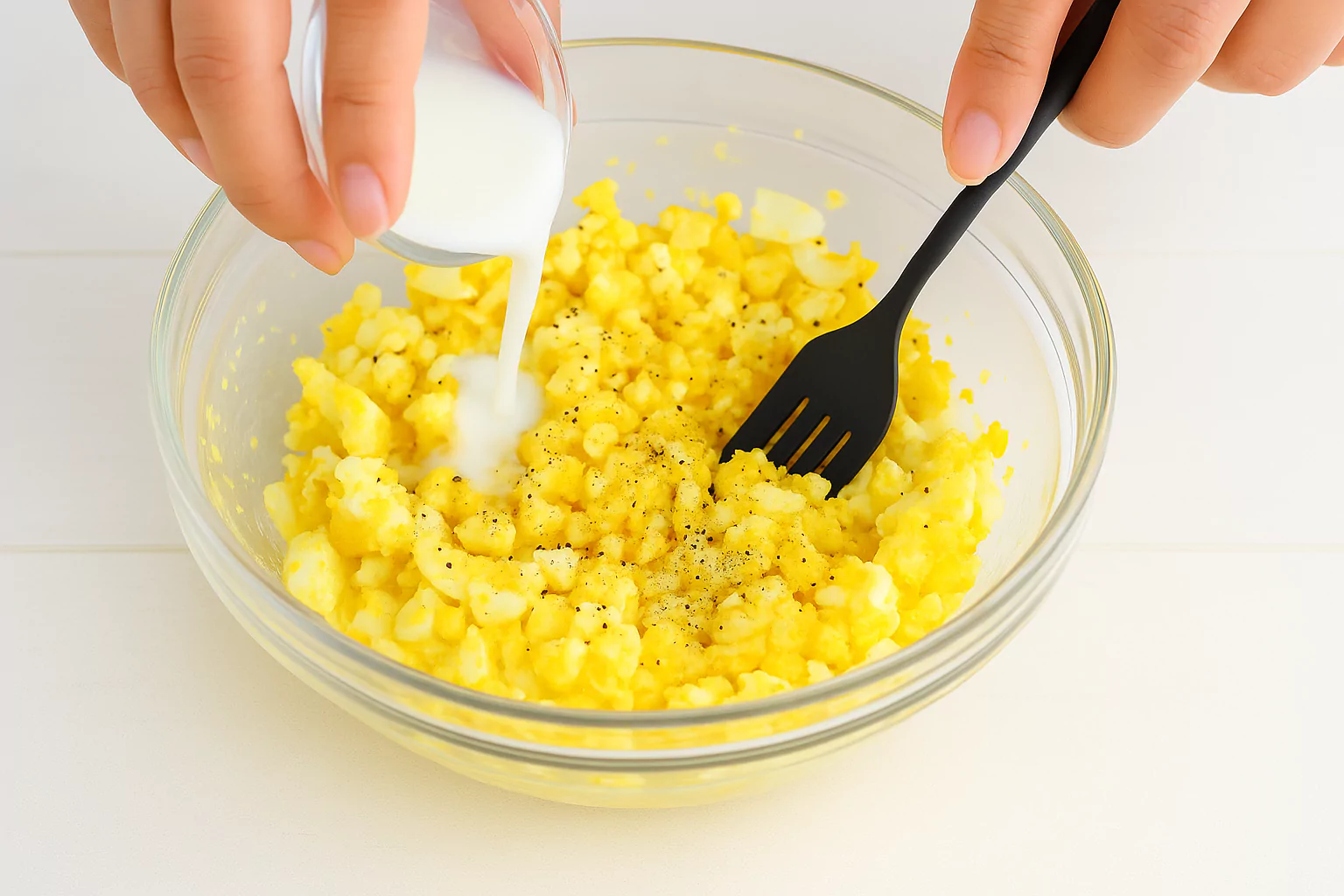
Step 5: Add the Kewpie Mayonnaise
Now, stir in the Japanese mayonnaise. Mix until the filling is creamy and smooth. Give it a taste, and if it seems underseasoned, sprinkle in a bit more salt or pepper.
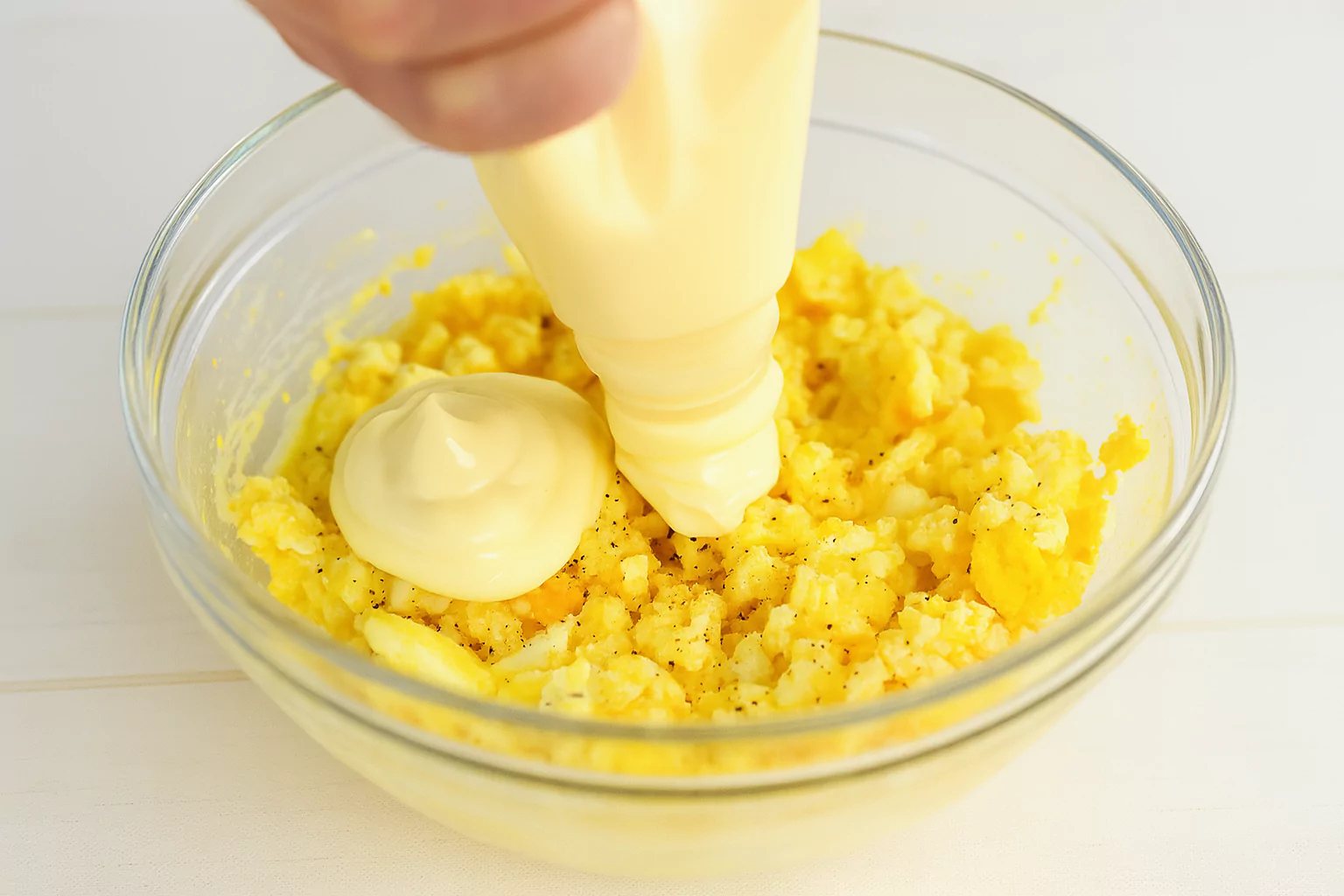
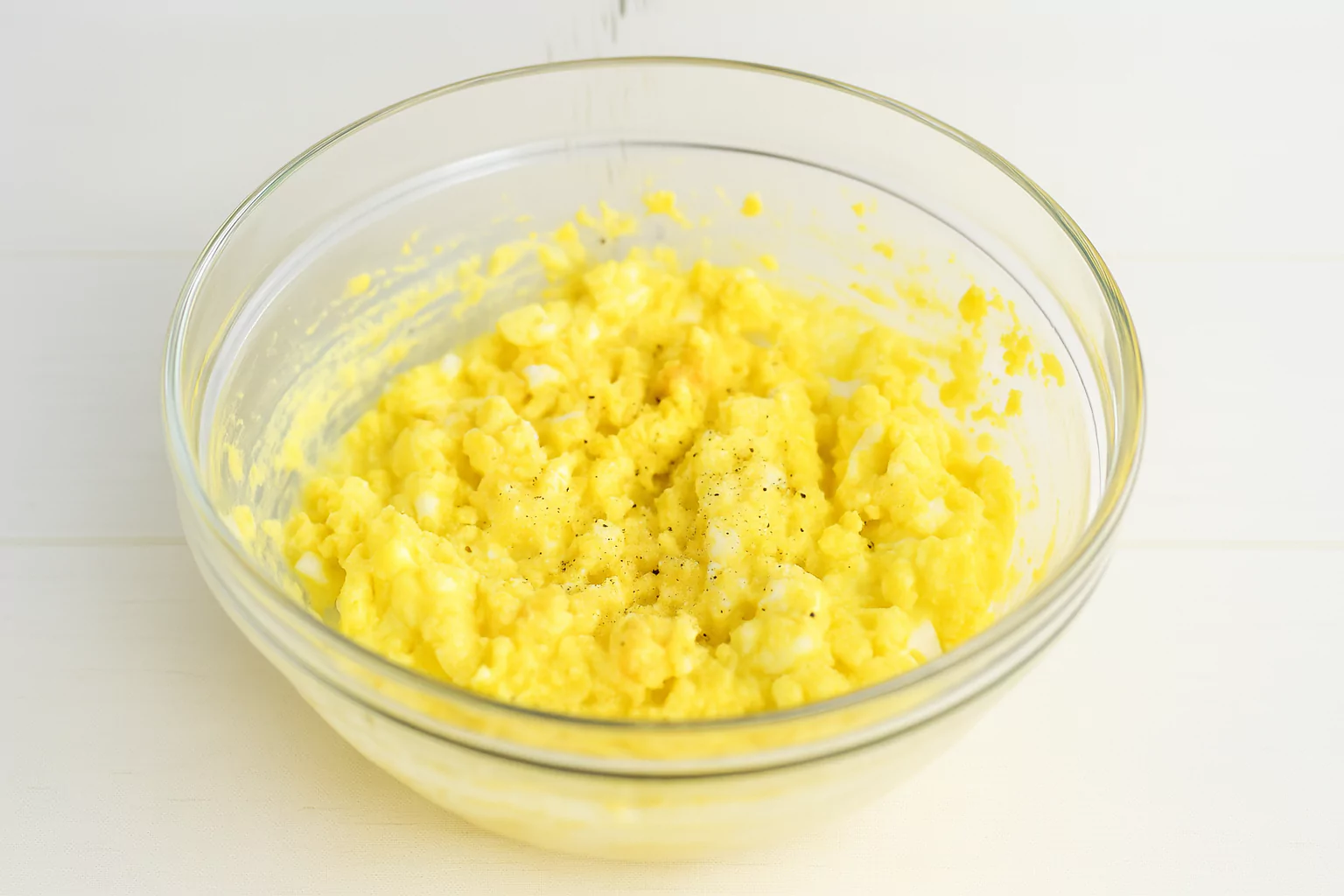
Secrets to Success and Expert Tips
Even a simple Egg Sandwich can turn out amazing with a few smart tips:
- Use cold eggs for easy peeling.
- Mash eggs gently—don’t overdo it.
- Butter the bread lightly to stop it from getting soggy.
- Rest before cutting—press the sandwich for 5 minutes to help it set.
Fresh, high-quality eggs and Kewpie mayo are the real keys. And don’t skip the milk—it brings that smooth, fluffy texture you’ll love in every bite.
Assembling the Egg Sandwich
- Now let’s put it all together. Building your Egg Sandwich right makes a big difference.
- Lay out 4 slices of shokupan.
- Lightly spread salted butter on all slices.
- On two slices, evenly spread the egg salad.

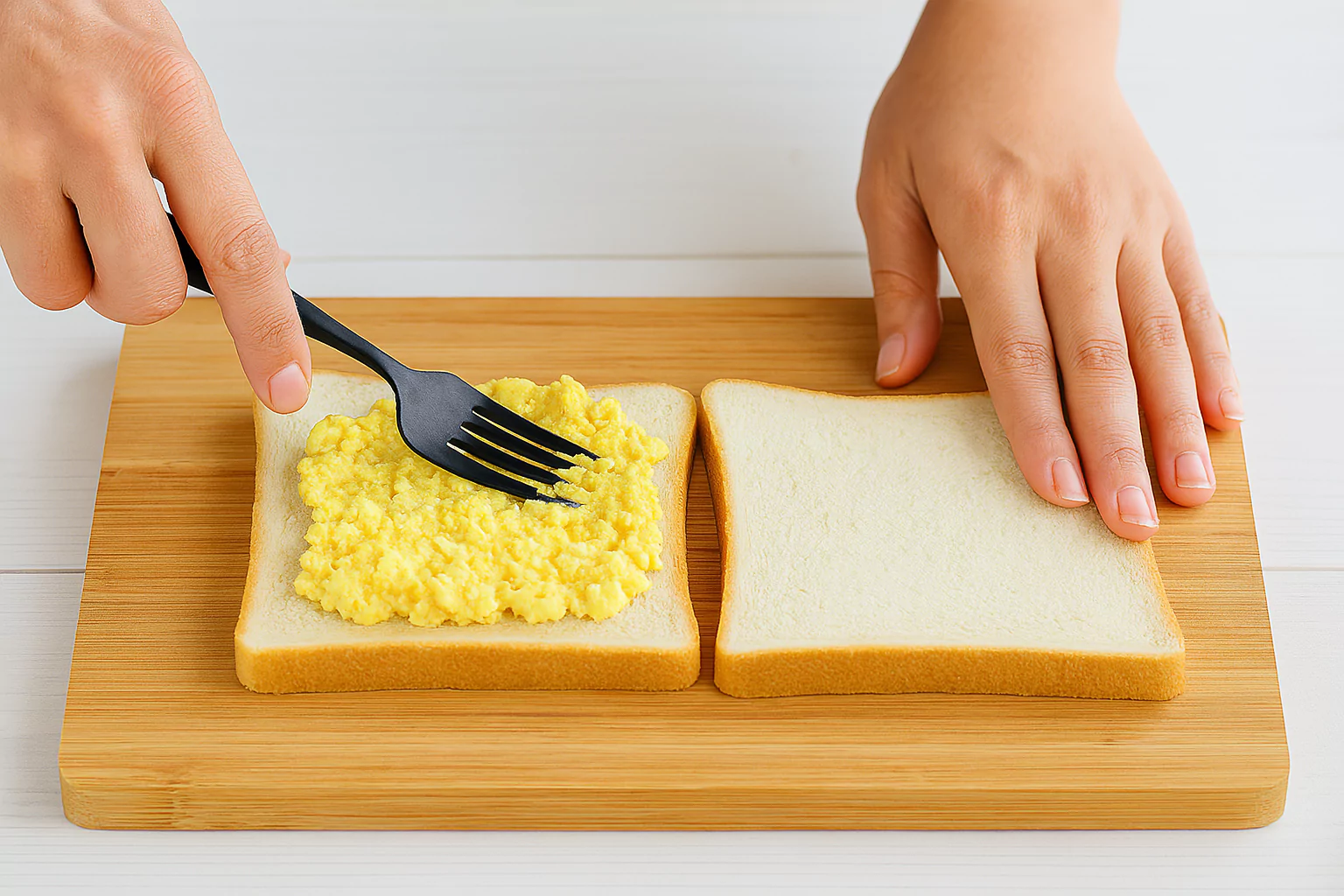
- Place a second slice of bread on top, making sure the buttered side faces the filling.
- Press gently between two plates for 5 minutes.
- Trim the crusts (save them for later).
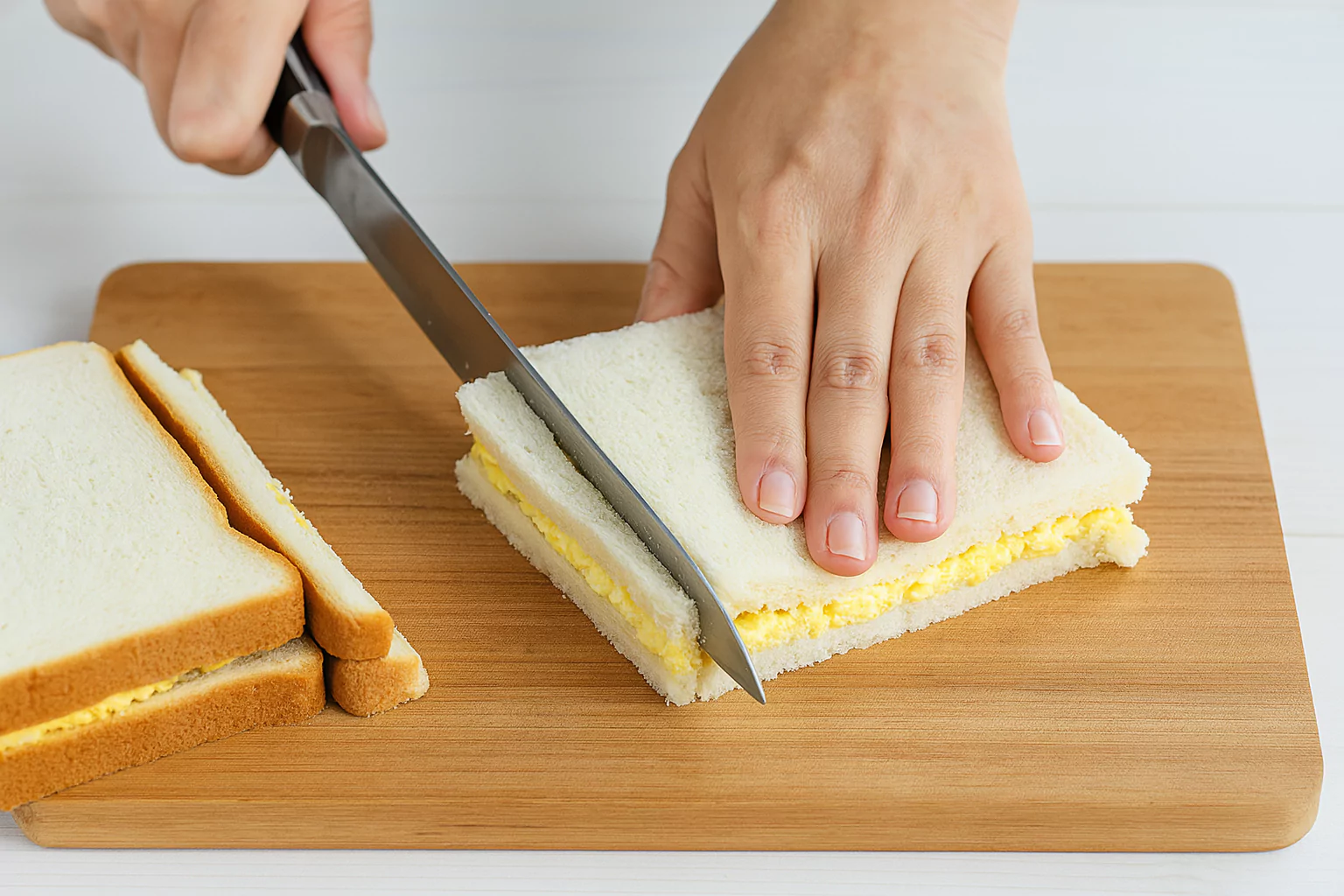
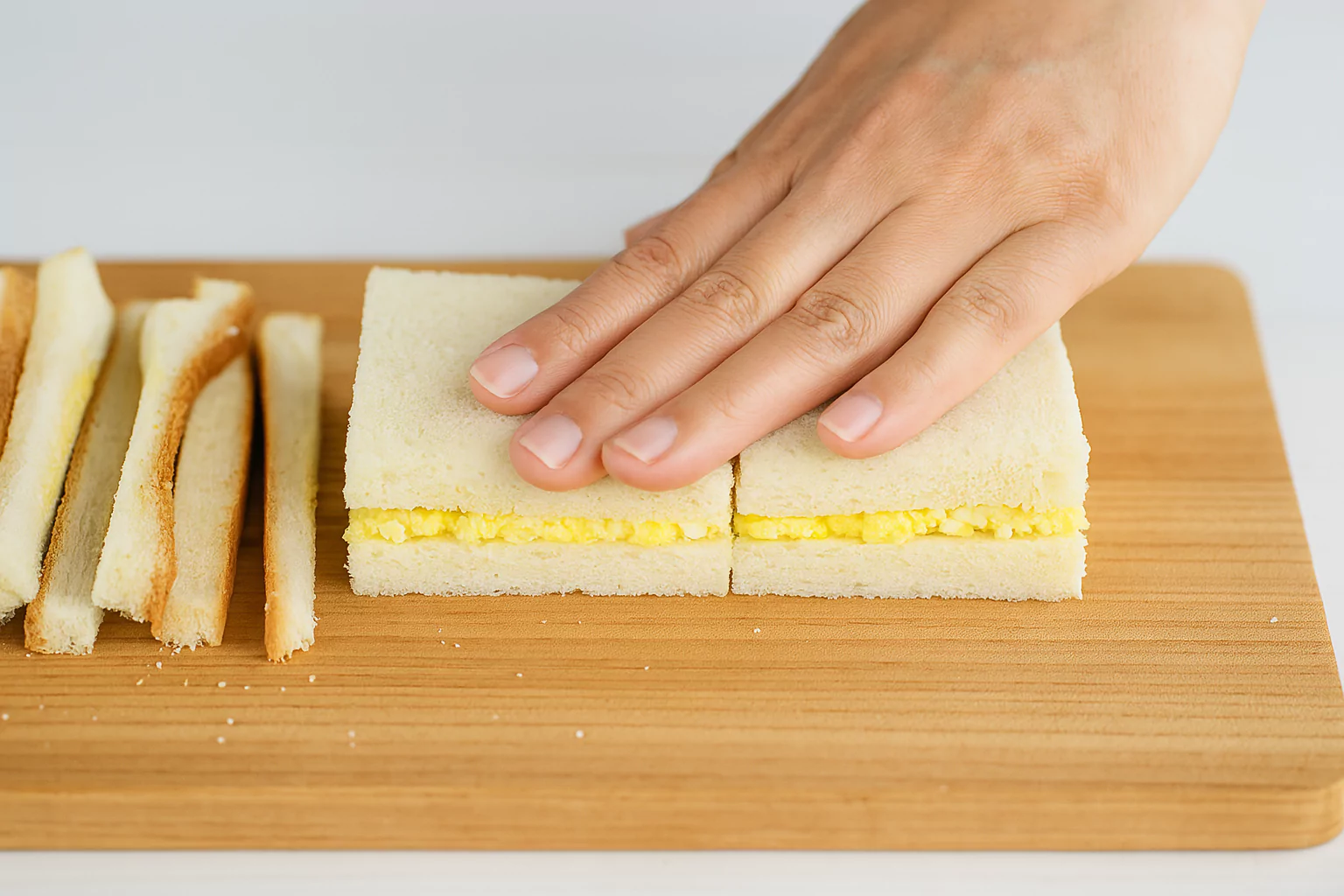
- Slice in half and serve.
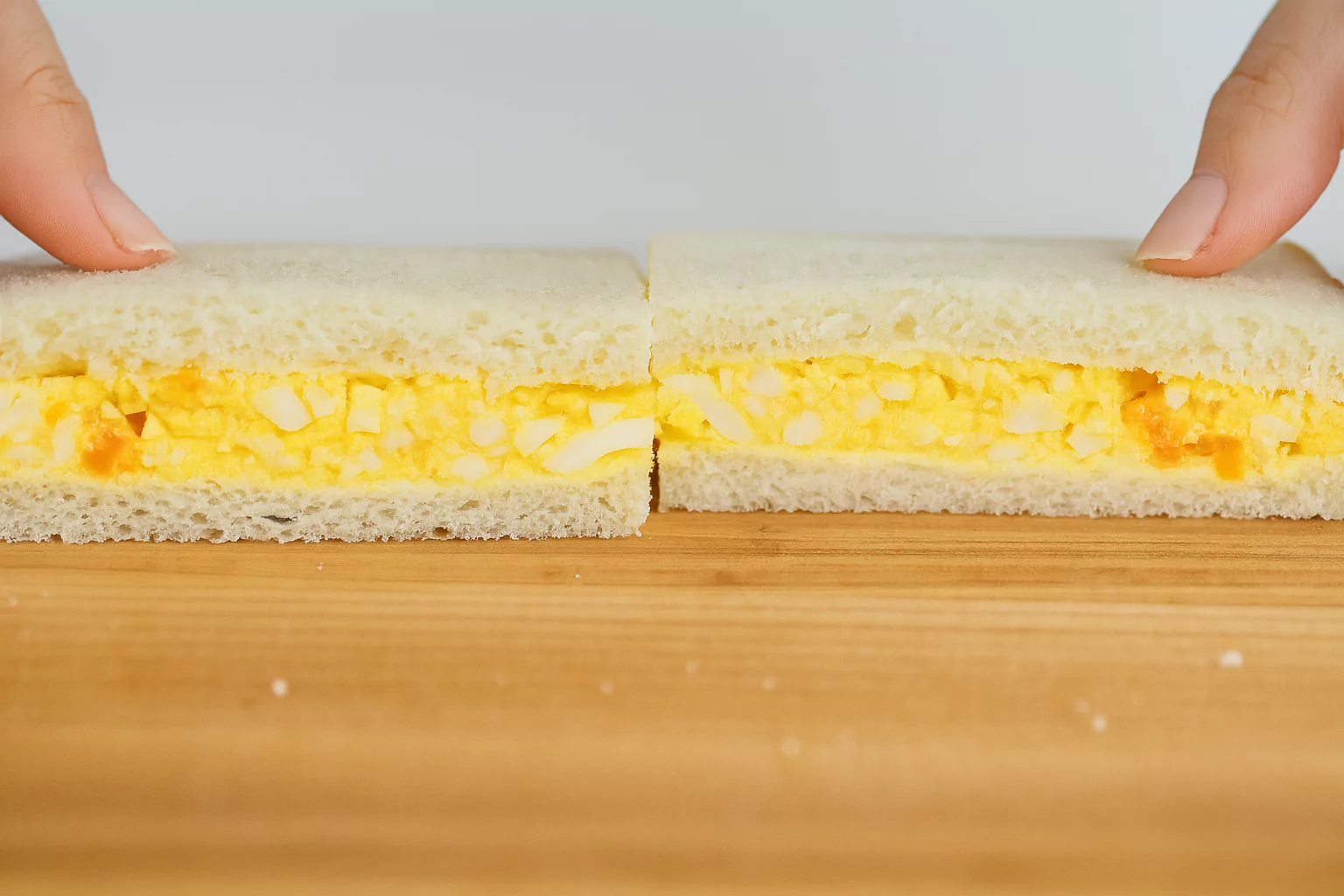
Hana’s Recipe Tips
Hana, a Japanese home cook, always adds her personal twist to the Egg Sandwich. Her top advice?
- Let the eggs cool naturally before peeling.
- Use room-temperature butter for easy spreading.
- Cut the sandwiches with a sharp knife for clean edges.
- If you’re packing it to go, wrap the sandwich tightly in plastic for a clean, compact finish.

Storage and Make-Ahead Tips
You can make the egg salad in advance and store it in the fridge for up to 2 days. When you’re ready, simply assemble your Egg Sandwich fresh for best taste and texture.
Storage Guidelines:
- Refrigerator: Store wrapped in plastic or in an airtight container for 1–2 days.
- Do not freeze: The texture of eggs and bread won’t hold up well after freezing.
- Serving: Eat cold or at room temperature—no reheating needed.
Recipe Variations for Egg Sandwich
Looking to change things up? Try these twists on the classic Egg Sandwich:
- Spicy kick: Add a pinch of mustard or a drop of hot sauce.
- Herb delight: Mix in chopped parsley or chives.
- Pickled twist: Add finely chopped pickles or relish.
- Textured bite: Add diced cucumber or crispy lettuce.
Even with changes, the base of the Egg Sandwich stays rich and soft.
Conclusion
The Japanese Egg Sandwich is proof that simple food can be truly special. With just a few ingredients and easy steps, you can create a sandwich that’s creamy, comforting, and full of flavor.
Make it for yourself, your kids, or guests—it fits any time of day. And once you’ve mastered the basic version, don’t be afraid to try your own version of this iconic Egg Sandwich.
Frequently Asked Questions (FAQs)
Q1: What makes a Japanese Egg Sandwich different?
It uses soft milk bread and creamy mashed eggs mixed with Kewpie mayonnaise, giving it a richer flavor than regular sandwiches.
Q2: Can I use regular mayo?
To mimic Kewpie’s flavor, mix in a touch of rice vinegar and a pinch of sugar with regular mayonnaise.
Q3: Is the Egg Sandwich healthy?
It’s a good source of protein and healthy fats, especially when made with less mayo or whole grain bread.
Q4: Can I make the Egg Sandwich ahead of time?
Yes! Prepare the egg filling in advance, and assemble when needed for a fresher bite.
Q5: How do I keep my Egg Sandwich from getting soggy?
Use butter on the bread, and keep it chilled if storing for later.
Q6: What’s the best way to pack this sandwich for lunch?
Wrap it tightly in plastic wrap to hold the shape and keep the moisture in.
Discover More About Japan
If you’re curious to explore more about Japanese food, culture, and travel, be sure to check out Japan to Visit. It’s a great resource for discovering the beauty of Japan, from delicious recipes to stunning destinations.
Japanese Egg Sandwich (Tamago Sando) たまごサンド
Course: Main CoursesCuisine: JapaneseDifficulty: Easy2
servings5
minutes13
minutes320
kcalIngredients
3 large eggs (about 50g each without shell)
¼ teaspoon sugar
¼ teaspoon kosher salt (Diamond Crystal preferred)
⅛ teaspoon freshly ground black pepper
2 teaspoons milk
2 tablespoons Japanese Kewpie mayonnaise
4 slices of shokupan (Japanese milk bread)
Salted butter, for spreading
Directions
- Boil the Eggs
Place the eggs in a saucepan and add cold water until they’re covered by about an inch. Warm over medium heat until it reaches a boil, then let the eggs cook for another 12 minutes. - Cool and Peel
Move the eggs into a bowl filled with ice water to chill them rapidly. Once completely cooled, peel the shells carefully. - Mash the Eggs
Place the peeled eggs in a mixing bowl. Use a fork to mash them into fine bits. Aim for a light, even texture without any big pieces remaining. - Season and Mix
Add sugar, salt, pepper, and milk to the mashed eggs. Stir to combine evenly. - Add Kewpie Mayo
Add the Japanese mayonnaise and mix until smooth and creamy. Taste and adjust seasoning if needed. - Prepare the Bread
Lightly butter each slice of shokupan. Spread the egg mixture evenly on two of the slices. Top each with the other slice, buttered side down. - Press and Slice
Gently press each sandwich with your hands or place between two plates for 5 minutes to compress. Trim the crusts if you’d like the traditional look. Cut in half and serve.
Notes
- Shokupan is a soft, sweet Japanese milk bread that adds to the sandwich’s unique texture.
For a deeper flavor, let the egg filling chill in the fridge for 10 minutes before assembling.
Save the crusts to make crunchy toasted snacks or breadcrumbs later.
Wrap leftovers tightly and store in the fridge for up to 2 days.
